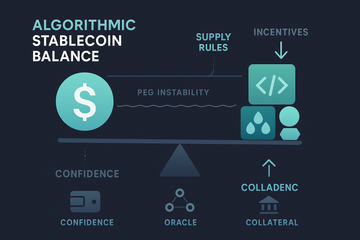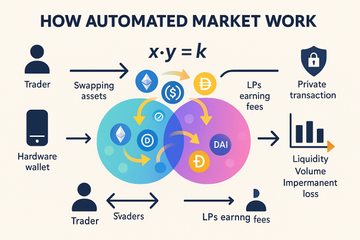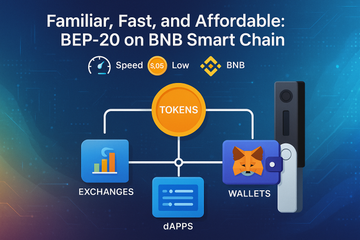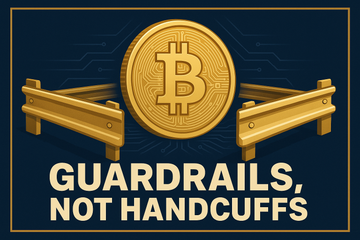To the uninitiated, the word 'multisignature' might sound like just another tech buzzword that belongs buried in a whitepaper. But, you know what? Multisig—or multi-signature transactions—might be one of crypto’s most down-to-earth and practical security measures. It gives individuals, businesses, and even whole communities a way to share control, mitigate risk, and sleep just a bit easier at night. So if you've ever wondered why some of the savviest folks in crypto trust more than one signature for a single transaction, pull up a chair. Let’s talk about what multisig is, how it works, and why it isn’t just a tool for the tinfoil hat crowd.
So, What Is Multisig… Really?
Let’s keep this simple: a multisignature transaction is one that needs more than one handshake to go through. Instead of just your private key giving the green light, a certain number of digital signatures have to line up—like a row of security guards nodding before opening a vault. This mechanic isn’t unique to crypto. Think of corporate bank accounts, where checks might need two managers’ approvals.
In cryptocurrency, the typical structure is called 'M-of-N.' That’s shorthand for how many signatures out of a total are needed. Maybe it’s two out of three close friends. Or six out of nine board members. It doesn’t matter which, really; the important part is you aren’t relying on just one person or key, reducing single points of failure (Investopedia).
How Does It Work—And Why All the Fuss?
Here’s the thing: implementing a multisig wallet isn’t like setting up another email. It’s a deliberate process:
- Step 1: A group agrees on the total number of signers and the number of approvals needed. Say, 3-of-5: Any three out of five people can authorize a transaction.
- Step 2: Everyone gets their own private key. These are stored as securely as possible (Trezor and Ledger hardware wallets are often trusted allies here).
- Step 3: When a transaction is proposed, the required number of users review and sign off with their keys.
- Step 4: Only when the minimum approval threshold is reached does the transaction hit the blockchain and actually move funds (Cointelegraph).
It’s sort of like three roommates needing to agree before paying the rent—except with potentially millions at stake.
Practical Examples: When Multisig Saves the Day
Crypto folklore is littered with cautionary tales—Silk Road, Mt. Gox, and countless online forums telling stories of lost millions, all because of compromised keys or rogue admins. Multisig started getting traction in a big way after the 2013–2014 wave of exchange hacks. Remember BitGo pioneering its multisig wallet around this time? Some of the stingiest whales and most security-obsessed exchanges adopted multisig nearly overnight afterward.
But, let’s get down to brass tacks—how does this play out nowadays? Here are common scenarios:
- Shared Family Funds: Parents set up 2-of-3 control, with one key kept offline in a safe. Even if their teenager tries something clever, they’ll need mom or dad to move even a single satoshi.
- DAOs and Community Treasuries: In decentralized autonomous organizations, no one person wants (or should have!) full access. Safe (formerly Gnosis Safe) is now a staple for DAO treasuries, requiring sign-off from multiple board members before a grant goes out.
- Business Custody: Crypto firms—think trading desks or exchanges—often require a majority of executives or legal officers to co-sign high-value transfers. Some even automate these processes with enterprise-grade platforms.
Pitfalls: Does Multisig Have Any Hiccups?
Let’s be honest: anything that sounds this airtight must have a catch, right? (Short answer: kind of.)
First, coordination quickly becomes tricky as you add more signers. Keys get lost, people fall out, or someone’s on vacation when the rent (or ransom) needs paying. Also, some blockchains support multisig differently—or not at all. Bitcoin, for instance, supports native multisig, but Ethereum took a smart contract-based approach, which is flexible but introduces risks like buggy code.
And then there are fees. More signatures mean more data on-chain, and, you guessed it, higher transaction costs. If you plan on moving lots of coins around, you’ve got to factor in the occasional need to rotate out a compromised key or replace a signatory who’s retired to some island paradise.
Where the Rubber Meets the Road: Trezor & Ledger, The Hardware Titans
Now, while there are mobile and software-based multisig wallets floating around, there’s a reason serious folks turn to hardware wallets like Trezor and Ledger. Both have stepped up in recent years to simplify multisig for regular users and businesses alike—no command-line acrobatics required.
Trezor’s Suite allows users to participate in multisig setups with open-source coordination tools such as Sparrow or Electrum. Ledger wallets, with Ledger Live and integrations like Casa and Nunchuk, have made co-signing seamless and user-friendly—even for those who don’t eat, sleep, and breathe blockchain. The push for easy multisig might be the most meaningful upgrade to hardware wallet security since the phrase “Not your keys, not your coins” hit the scene.
Why Multisig is Going Mainstream—Finally?
Let’s get real: for years, the barrier to using multisig was simply... friction. Now? Improved interfaces, clearer educational resources, and battle-tested hardware integration have made this level of security accessible to everyday users. Companies like Safe (formerly Gnosis Safe) and BitGo are even providing tailored enterprise versions, serving DAOs, family offices, and corporate treasuries worldwide.
And with regulators starting to take crypto seriously, businesses are eager to show that fund security is no afterthought. Some regions are even nudging exchanges to use multisig to protect customer funds, further embedding it in crypto’s backbone (Investopedia).
The Bottom Line, From a Crypto Old-Timer
If you’ve glanced at a hardware wallet and thought, “That’s enough security for me,” it may be time for another look. Multisignature transactions aren’t about paranoia—and they aren’t just for whales. They're about community, shared responsibility, and sometimes, just making sure nobody can run off with the pot. In a world that values trust but verifies everything, asking for that second, third, or even seventh signature just makes sense.
So, the next time you’re setting up a wallet—maybe for that poker club, small DAO, or even family savings—think about giving multisig a try. It might not make life simpler, but it’ll certainly make your crypto harder to steal. And honestly, isn’t that kind of the point?











